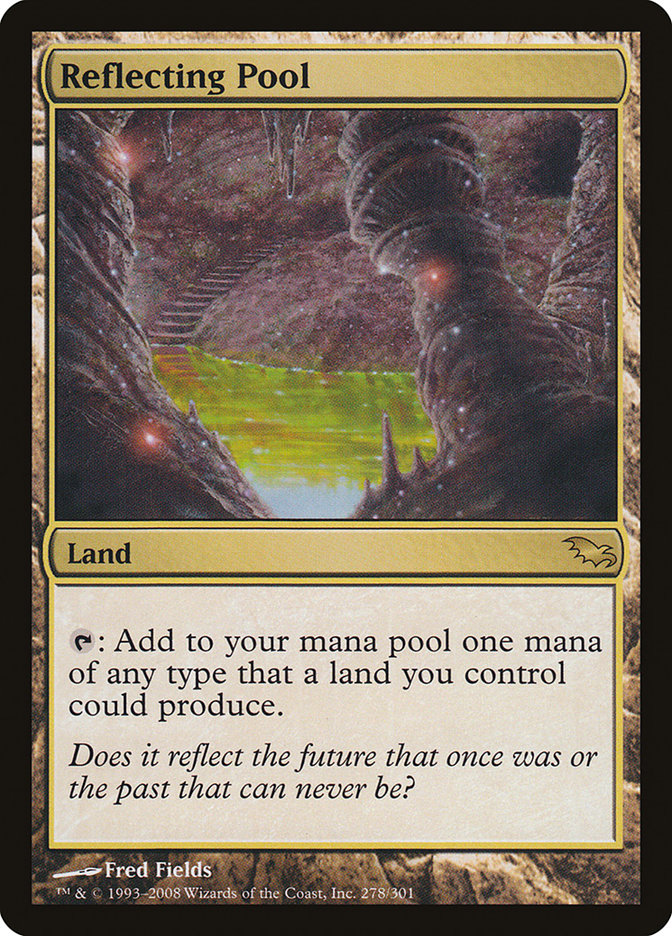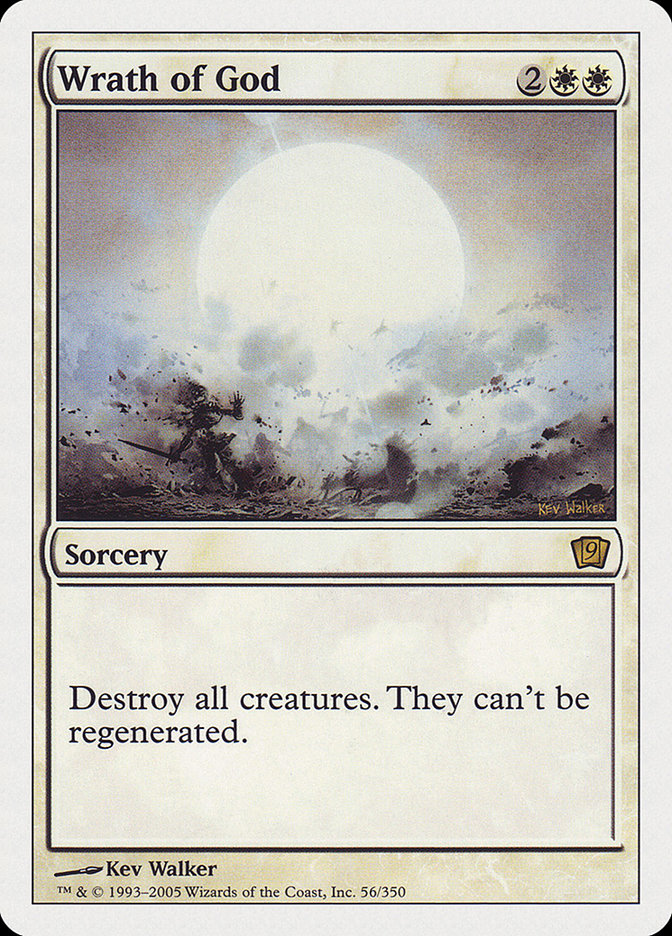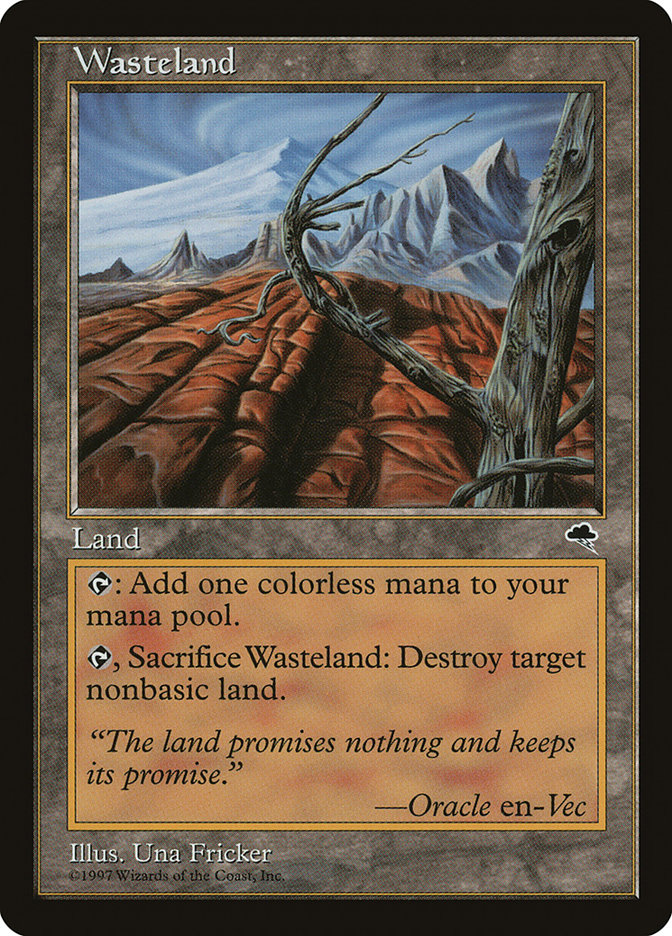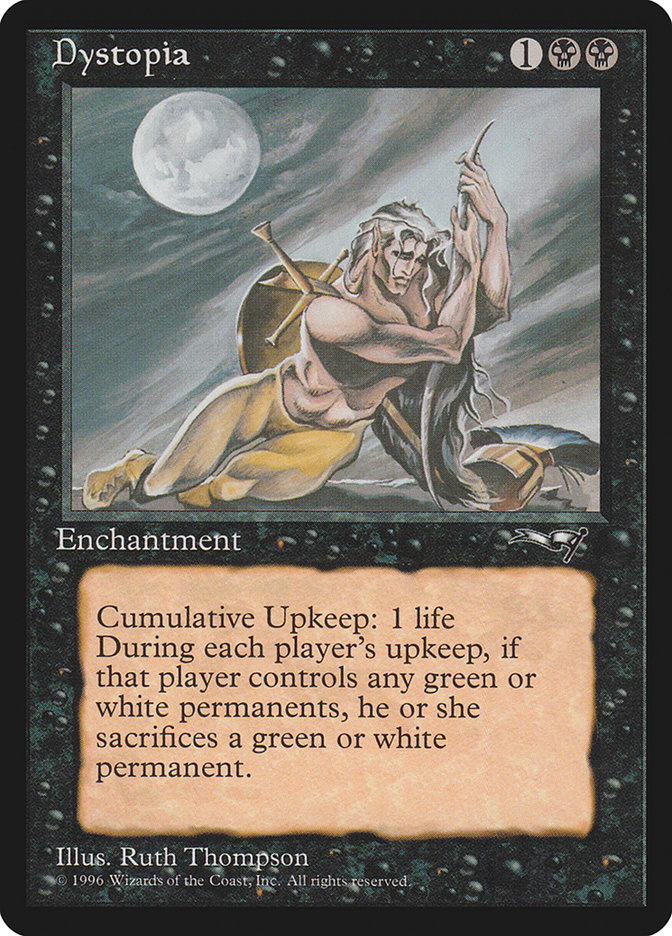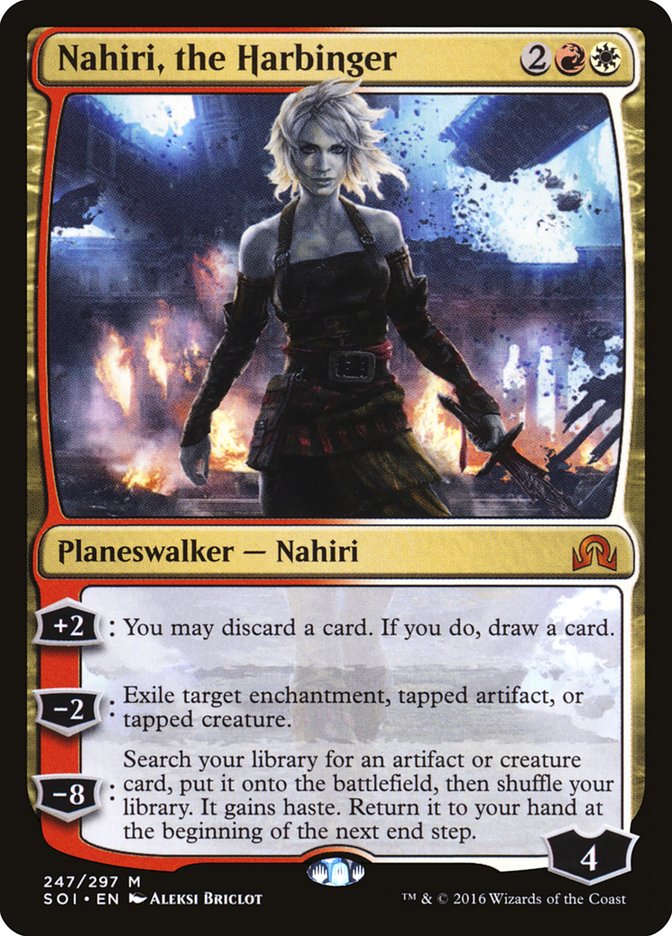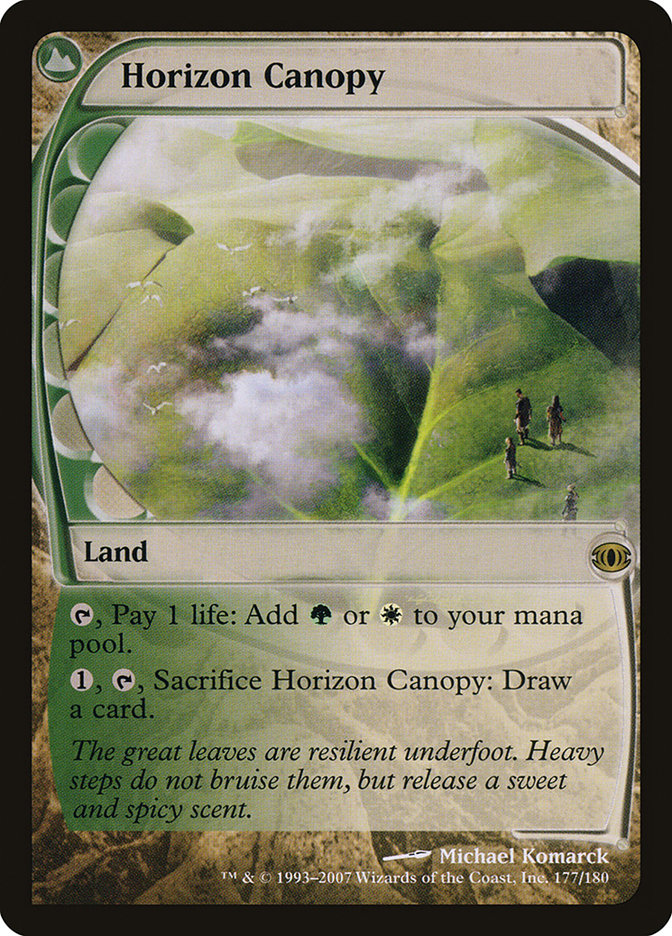I’ve written a lot about reprints over the years. I haven’t done the math, but I wouldn’t be surprised if it’s my third-most-covered topic, after weekly trends and set reviews.
This shouldn’t come as a surprise to anyone with even a passing interest in Magic finance. If you’re a new player or you don’t have a large collection, reprints represent your best chance to buy Eternal-relevant cards at less-than-outrageous prices. If you’re an established player with multiple Modern and Legacy decks, reprints can be fearful reminders of how your hard-earned collection might be devalued.
Or, at least, this is how the debate always seems to be framed.
The reprint debate kicked into high gear again last week after Mark Rosewater responded to a reader question on his blog. “MTG desperately needs reprints to keep the eternal formats viable for new and more casual players,” reader mana-ramp-matoran told Mark.
“Here’s the problem,” Rosewater responded. “The vast majority of cards that matter in Modern, that are powerful enough to be relevant in a format with that many cards, will horribly warp Standard. We experimented in Theros with Thoughtseize and it went quite badly.”
Reddit, as expected, was apoplectic. “So I guess we were lied to when we were promised a more aggressive policy toward reprints?” user EvenDeeper wrote. “Bit out of touch with reality, Mr. Rosewater?” said puntmasterofthefells. Desosaink had an even stronger take: “MaRo has ruined Magic for me,” he wrote.
The conversation kept spinning in circles. Rosewater responded, reminding people about sets like Modern Masters and Eternal Masters and telling disgruntled players to just “give us time” to figure things out. Finance writer Travis Allen wrote an excellent article explaining why WotC can’t just keep churning out reprints.
The Redditors didn’t buy it. In fact, a large portion of the thread in response to Travis’s article was devoted to talking about how Chronicles wasn’t the near-game-killing mistake that many finance writers (myself included) keep reminding people about. “Everyone uses this set as an excuse against reprints,” wrote Redditor Epyon_. “It’s anecdotal evidence that is 21 years old. It’s Magic’s boogey man and it’s totally unjustified that it’s still considered a valid argument against reprints.”
While many of my fellow players are quick to dismiss Reddit as some kind of backwater echo chamber, I’ve heard similar pro-reprint arguments again and again on Twitter, at my local store, at Grand Prix-level events, and in the comments section of my articles here.
To many players, reprints are a black-and-white issue that’s almost political in nature. Reprints are good for new players (the poor) and bad for established players (the rich). Advocate for the liberal reprinting of Modern staples, and you’re a voice of the people. Speak against it, and you’re a conservative shill propping up the interests of the wealthy elite.
Is this the right way to look at the problem of reprints? Am I only conservative on this issue because I have a reasonably large collection? Do the Chronicles Truthers have a point? That’s our topic for today.
The Wizards Approach
We’ll get to the issue of what WotC should do about reprints in good time, but I’d like to tackle a more important question first: what is WotC actually doing about reprints right now? Let’s begin by taking a look at some recent history.
For years, Magic didn’t have many high-profile reprints. Reflecting Pool’s reprint in Shadowmoor was kind of a big deal, I guess, but that was before Commander was widespread. If you started Magic at some point after Tempest’s release, you had probably never even heard of the card. Major reprints only really came every two years, in the latest core set. This is where Wrath of God and Birds of Paradise kept showing up, at least.
The first major fall set reprinting effort, the shocklands in Return to Ravnica, went pretty well. The lands were good in Standard, but they didn’t warp the format around them. Prices plummeted from the $40 range to the $10-$15 range and have stayed relatively low in the years since then. Modern Masters came a few months after that. Then M14 gave us Mutavault; Theros gave us Thoughtseize; M15 had Urborg, Tomb of Yawgmoth; and Khans of Tarkir had the fetchlands.
At that point, it seemed likely that each large set would contain at least one high-profile reprint. This is why so many of us (including me) pegged Battle for Zendikar to have Goblin Guide and Inquisition of Kozilek.
Since then, nothing. Granted, it’s only been three sets, but Battle for Zendikar block didn’t have any high-profile cards from Zendikar, nor did Shadows over Innistrad have any of the chase rares from Innistrad. Couple that with the Rosewater’s comments, and it’s clear that WotC is moving away from putting high-profile reprints in their Standard-legal sets.
I can see why WotC had this change of heart. In the past two years, we’ve had three major Modern reprints completely warp the Standard environment around them: Mutavault, Thoughtseize, and the fetchlands. It’s certainly possible to argue that Standard was better with these cards; I personally liked fetchland-mana Standard. But if you accept that they were mistakes (or at least that WotC views them as mistakes), you can understand why R&D isn’t eager to run back Liliana of the Veil or Arcbound Ravager.
I know it’s popular to rag on WotC these days, but this is one area where the integrity of the game seems to have trumped potential easy sales. There’s no question that Thoughtseize helped sell Theros packs, fetchlands helped sell Khans packs, and Liliana of the Veil would have helped sell Shadows over Innistrad packs.
I don’t have the figures to back up how much money WotC lost by changing their reprint policy to help ensure that Modern cards don’t warp the Standard environment, but it’s potentially significant. This sacrifice is lost on the community because people are so eager for cheap reprints.
At any rate, this is a sea change in terms of how we need to think about WotC’s reprint policy. In the past I’ve talked about “reprint equity,” the idea that high-profile reprints will help sell packs and thus won’t be buried in sets like Eternal Masters that don’t need any help selling themselves.
This goes out the window if WotC has truly decided not to do these kinds of reprints in the foreseeable future. It means, for example, that the Zendikar fetchlands very well could show up in Eternal Masters. This is something I firmly believed would not happen three months ago when I evaluated potential reprints for that set.
So where does this leave us, reprint-wise? Well, let’s consider the following avenues that WotC has available to them right now should they choose to reprint a card:
· Reprint sets like Modern Masters and Eternal Masters, which now appear to be yearly releases
· Other non-Standard-legal set releases, like Conspiracy II
· The Zendikar Expeditions, which could become a regular feature
· The Commander box sets
· The yearly From the Vault release
· Judge foils
· Grand Prix foils
· Regional PTQ foils
· FNM foils (especially during the month of a Masters set release)
You can make an argument that these releases are too limited or do a poor job of getting reprinted staples into the hands of the players that need them most. In fact, I’ll be addressing these claims in the next part of this article. For now, though, can’t we all agree that the problem isn’t a lack of available venues for high-profile reprints?
Ten years ago, there were judge foils, FNM foils, and a core set every 24 months that no one wanted to buy packs of because 95% of the cards in it were terrible. That was it. This year, just like last year, there will be an entire set dedicated to reprinting staples. Wasteland is being reprinted twice in 2016. WotC isn’t avoiding reprints, but embracing them at nearly unprecedented levels.
Many newer players, like the rabble-rousers on Reddit, assume that WotC and the established players are both trying to keep the number of available reprints down. But WotC and the collectors are at odds here, because value tied up in secondary market collections doesn’t do WotC any good.
Here’s an example: if Misty Rainforest goes from $70 to $300 tomorrow, Wizards of the Coast doesn’t see a single dollar of that gain; all that theoretical money belongs to players and store owners. But if WotC announces tomorrow that they will now be selling Misty Rainforests directly to the consumer for $10 each, all burden of that loss would entirely belong to the players and store owners who had $70 copies of Misty Rainforest in their collection. All of the profit potential would belong to WotC, who would likely make tens of thousands of dollars on their $10 Misty Rainforest gambit.
So why doesn’t WotC just do that? The players clearly want more reprints. WotC could make more money if they reprinted cards more aggressively. Why screw around with limited printings of $10/pack expansions that no one can actually get their hands on? Why cater to the “rich” players at all?
Why We Can’t Have Nice Things
Let’s take a look at two possible futures.
In Future A, Mark Rosewater doubles down on the Reserved List and decides that reprints will be a thing of the past. The secondary market goes crazy and speculators begin to hoard as many cards as they can get their hands on. Your Modern deck doubles, triples, goes up in price tenfold. You decide to sell it because it’s worth more than your car and there’s no one to play Modern with anymore regardless. But you have trouble finding a buyer; too many people are trying to sell their collection at the new peak dollar figures and real-world demand has fallen off a cliff.
The market swings back the other way, but the secondary market never really finds a balance. The best decks still have at least one or two cards that regular folks can’t hope to afford. WotC cancels Modern PPTQ season due to card availability outcry. Some people continue playing Modern at the local level, but most would rather spend a little more and play Legacy or Vintage anyway. Ultimately, Eternal Magic becomes an ever-shrinking club of established players who have been around the game for at least a decade and are privileged enough to have never had to sell off their collection.
In Future B, Mark Rosewater takes all those Reddit complaints to heart. The Reserved List is abolished. Every card in Eternal Masters is a tournament or Commander staple, pack prices are lowered to $3.99, and the set is printed to fulfill demand and then some. Furthermore, WotC declares that a similar set will be released every year in a concentrated effort to keep all Eternal cards at or below $10 on the secondary market.
First, everyone laughs at the people with large collections who got screwed over; after all, Magic is a game, not a retirement plan, right? We all draft Eternal Masters again and again and again until the average value of a pack drops well below retail. Force of Will dips below $10. Wasteland—a rare, not a mythic, remember—hits $3. People sell the rest of their collections, too—after all, we know another Masters set is coming next year, and the same thing will happen to card like Snapcaster Mage and Liliana of the Veil. New players are ecstatic. Tarmogoyf is $15! Cryptic Command is $5! Commander cards like Gauntlet of Power and Quicksilver Amulet are bulk rares again!
Collected Company becomes the most valuable card in Modern. You can build a Tier 1 deck in Legacy or Modern for under $200, compared to more than twice that for Standard. Pack sales for Eldritch Moon slump. Why are we forced to play Standard again? Why do we have to spend twice as much money for cards that will rotate in a few months when Eternal formats are so much cheaper and you can keep those decks around forever? People demand more Modern events, but complain that Modern is too stagnant. With so much more attention placed on the format, its weaknesses are even more exposed.
Standard develops a bizarre, Yu-Gi-Oh!-esque marketplace where prices spike and drop wildly depending on how much play they’re seeing at any given moment with no regard for their long-term future. Since WotC ensures that all Eternal cards will eventually be incredibly cheap, why hold anything through rotation? Players are disgusted when their $50 Angel of Whatever drops to $5 in less than a week.
Most players who aren’t actively trying to make it on the Pro Tour opt out of competitive Standard entirely. Many local stores go under, either from losses surrounding their now-worthless Eternal cards or from a lack of confidence in the secondary market as a whole. It dawns on players that most store owners don’t make any money on pack sales. The singles and collection flips were keeping them in business the whole time, and now those opportunities are all but gone.
Beyond that, WotC has lost out on several major sources of revenue and incentive. Judge compensation looks a whole lot worse when they’re getting $5 foils for days’ worth of difficult labor. GP and RPTQ foils are no longer helping to compensate for expensive entry fees. The From the Vault series is scrapped. A fundamental joy of the game, cracking packs looking for that elusive chase rare, is lost.
I think we can all agree that Future A is lousy for everyone. And I don’t know about you, but I’m not too crazy about Future B, either. WotC might not profit directly on the secondary market, but they do rely on it to maintain interest in their latest sets as well as to support all of their local retailers. I think most of us realize that some number of reprints is a good thing, but overdoing it has the potential to cause harm, whether you have a large collection or not.
Once we eliminate the extremes, then, our question becomes one of degrees: how many reprints can the Magic economy support without hitting a Future B-style tipping point?
One of the reasons I think so many people are frustrated is because WotC is incentivized toward erring on the side of conservatism. No one is particularly worried about Future A, because WotC is clearly not going to stop reprinting sought-after staples. And the risks on this side have very temporary consequences. Prices getting too high and players getting a little antsy? Just increase the number of reprints a little and you’re good to go.
Future B is a lot more dangerous. If WotC isn’t aggressive enough with their reprints, they can write an open letter or a blog post or something and ensure people that they’re working on the problem. Printing too many cards is not a move that can be taken back; not only will you erode confidence in that single card, but you run the risk of permanently crashing the whole market. Future B is a black hole, and you don’t want to risk approaching its event horizon no matter what.
What can be done, then? One argument I’ve heard a lot, especially in reference to Mark Rosewater’s Thoughtseize comments, it that Standard should be super-powered every now and again in order to facilitate a bunch of high level reprints at once. This would be a colossally bad idea, though. Consider:
· You’d have to increase the overall power level in your new cards as well. A set or block where the reprints are the only exciting cards would be horribly disappointing to play with.
· A Standard environment where dozens of new cards are guaranteed to make a significant impact in Modern would be very expensive on the secondary market. Remember those sixteen-fetchland / Collected Company / Jace, Vryn’s Prodigy decks last season?
· The ripple into Modern—changing some decks, eliminating others—would be very frustrating, especially if many of the best Modern decks were the same as the best Standard decks.
· If you kept Standard at the same high power level going forward, you’ve invalidated 25 years’ worth of cards for Eternal play and Commander.
· If you powered down Standard after the super-powered block, you might go years without printing new Eternal-relevant cards as the super-powered cards would continue to warp Modern.
· Oh, and you’d end up with an awkward block rotation where a new set would be almost meaningless in terms of Standard Constructed during the power-down.
Yeah, this isn’t the solution. And since WotC has already tried and failed at reprinting these cards on a more sporadic level in Standard, it looks like sets like Modern Masters and Eternal Masters are going to be the future of reprints for the foreseeable future.
So. Is there any way to make these sets more accessible without risking a descent into Future B?
It’s no secret that the Masters sets are very profitable for Wizards of the Coast. At $10 per pack with no design and a very limited development cost, WotC is incentivized to pump these out as often as they can get away with it. WotC knows that they still need to avoid Future B, though, so they have to balance the following four variables very carefully:
1) Time between set releases (one Masters set every ten years will have a much lower impact on the market than one every year).
2) Print run (a larger print run allows more people to buy packs, but it also floods the market).
3) Contents of the set (a set with 250 awful cards and one great card will affect the market much less than a set with 251 great cards).
4) MSRP (Selling packs at $2 will tank prices a lot faster than selling packs at $10).
WotC is very aware of these four variables. Modern Masters 2015 has a much larger print run than Modern Masters 2013, but the MSRP was higher and the contents were worse. Eternal Masters will have a high MSRP and a low print run, but WotC is now doing these sets every year, so it needs to compensate somewhere.
These variables are more than just idle theory. If you actually want more accessible reprints, this is where you need to demand change. Shouting “I want more ‘Goyfs!” and begging for a descent into Future B isn’t going to work; WotC isn’t going to let that happen. But you might get them to budge on one of these four points in exchange for an increase in another.
See, it’s in WotC’s best interest to keep the MSRP as high as possible and the set release schedule as fast as possible, because this is how they make more money. By releasing Masters sets more often and keeping the prices high, they get to keep cashing in on the value of the secondary market.
If you want Masters set pack prices to come down and print runs to go up, you have to compensate with decreases in the other two variables; the sets have to be worse, and they have to come out less often. That puts less of the burden on us (no more $10/pack) at the expense of WotC’s bottom line without risking the health of the market. These aren’t sexy fixes, and they certainly won’t cause Modern prices to come tumbling down, but it’s probably the best way to get expensive Modern staples into the hands of the players who need them most.
This Week’s Trends
As Eternal Masters spoiler season approaches, let me remind you not to pre-order boxes at whatever inflated secondary market price they’ll inevitably start at. By all means buy them at retail if you can, but they’re likely not going to be worth $300+ All the best cards in the set will be spoiled first, and it’ll seem like every pack in the set will recoup $20-$30 worth of value, especially if the fetchlands are there. Wait for the whole spoiler is all I’m saying; with both Modern Masters sets, waiting was the prudent thing to do.
Nahiri, the Harbinger spiked late last week. Not only did she look good at the Pro Tour in an under-the-radar sort of way, but she’s starting to make an impact in Eternal Magic, both Modern (Kiki Chord) and Legacy (Miracles). If she is indeed for real in Modern and Legacy, she’s not going to be $15 again for a very long time. I’m holding for now just in case.
Kalitas, Traitor of Ghet is the other card that just doesn’t seem to quit. These are getting harder to find even at $30 each. I’d say to sell into the hype, but the card hasn’t spent a single day dropping in price since being printed. I’m holding until the price at least threatens to start leveling off.
Brain in a Jar spiked last week after both Melissa DeTora and Saffron Olive wrote about a fun budget deck involving the card. Saffron’s articles always lead to major price spikes; even if the decks aren’t particularly good, they end up being very popular. (And sometimes they are quite good. See Modern, which is currently being overrun by Goblin Bushwhackers.) It’s totally fine to move these at retail, but recognize that Brain in a Jar probably won’t drop back to bulk for a few weeks yet, if ever.
Modern risers this week: Horizon Canopy; Damnation; Lilliana of the Veil; Linvala, Keeper of Silence; Academy Ruins.
Gerry Thompson is still trying to make the Eldrazi work in Modern, and his article last week was full of interesting directions to take the deck. Talisman of Impulse feels particularly undervalued to me at less than $0.50. This could easily be a $5-$6 card if his R/G version of the deck ends up being good. Heck, all you really need are enough people tinkering with it for the card to hit $3 or $4.
The Zendikar Expeditions continue increasing in price, albeit slowly. Again, I love these long-term. Get in now if you’ve got the spare capital and you like shiny things.



